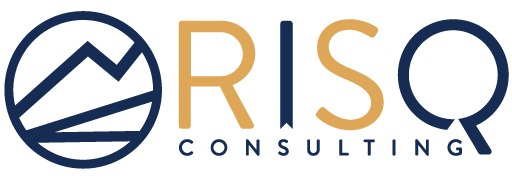Common Social Engineering Tactics to Watch For
This article is from RISQ Consulting’s Zywave client portal, a resource available to all RISQ Consulting clients. Please contact your Benefits Consultant or Account Executive for more information or for help setting up your own login.

Social engineering refers to a cyberattack method in which a cybercriminal preys on key human behaviors (e.g., trust of authority, fear of conflict and promise of rewards) to obtain unwarranted access to targets’ technology, systems, funds or data. These attacks can be deployed through various tactics, such as digital impersonation, deceitful messages or malicious software (known as malware). Social engineering attacks have become a significant threat to businesses of all sizes and sectors; after all, anyone can be targeted in these incidents—including entry-level workers, managers and CEOs.
With this in mind, it’s crucial for businesses to be aware of frequently utilized social engineering methods and adopt effective cybersecurity measures to help mitigate these incidents. This article outlines common social engineering tactics to watch for and offers associated prevention and response tips.
Common Social Engineering Techniques
In a social engineering attack, a cybercriminal implements a number of manipulative tactics to lure their target into performing actions that they normally wouldn’t. Some common social engineering methods include the following:
- Phishing—This technique involves cybercriminals leveraging fraudulent emails to trick recipients into providing sensitive information, clicking malicious links or opening harmful attachments. In order to make their emails appear genuine, cybercriminals will often impersonate trusted sources (e.g., a co-worker or well-known organization) and feign a sense of urgency to rush targets into acting. In addition to traditional phishing, cybercriminals may also attempt to manipulate targets over text messages or phone calls (known as smishing and vishing, respectively).
- Spear phishing—A spear-phishing scheme typically focuses on specific individuals or companies and uses personalized information to convince targets to share their data. In these instances, cybercriminals will research targets’ online behaviors, such as where they shop or what they share on social media, to collect personal details that make their schemes seem more legitimate.
- Business email compromise (BEC)—Such a technique refers to cybercriminals posing as business leaders or partners (e.g., executives, senior-level employees, vendors or suppliers), often for financial gain. Cybercriminals generally deploy BEC scams via email by creating fake accounts for business leaders or partners and using deceiving messages to trick targets into transferring money, divulging financial data or changing banking details.
- Baiting and quid pro quo—Through this strategy, cybercriminals make false promises to persuade targets to share data or download malware. These false promises may appear in the form of fraudulent pop-up advertisements or deceitful online promotions. For example, a cybercriminal may use a false advertisement for a free movie download to trick their target into installing a virus on their device. Similar to baiting, quid pro quo incidents involve cybercriminals promising to provide something valuable to their targets (e.g., an e-commerce coupon code or discounted security software) but only in exchange for the targets’ sensitive information (e.g., contact details, bank account numbers or login credentials).
- Pretexting—This technique consists of cybercriminals impersonating a co-worker, community leader or authority figure (e.g., a police officer, government employee, banker or tax official) and asking targets to provide sensitive information to confirm their identities or help complete critical tasks and assignments. Some of the most common types of data stolen amid pretexting incidents include employees’ contact details and Social Security numbers, company bank records and workplace security information.
- Tailgating—Through this tactic, cybercriminals physically sneak into workplaces by following closely behind employees or other credentialed individuals (e.g., custodians or building maintenance workers) without their knowledge. That is, after these authorized individuals leverage their key fobs or identification badges to pass through locked doors or security checkpoints, the cybercriminals will also slide inside before the locks can reengage. From there, the cybercriminals may leverage their on-site access to steal essential company records, infect important technology with viruses or malware and compromise security systems to allow continued workplace infiltration.
- Scareware—This method entails cybercriminals utilizing various scare tactics to frighten and manipulate targets into paying ransoms, often through seemingly legitimate prompts (e.g., fraudulent virus infection alerts urging targets to purchase security software for their devices or deceptive messages claiming to be from law enforcement that accuse targets of committing crimes and demand payment for any associated fines). Scareware may either initially contain malware or eventually coerce targets into downloading malware.
Tips to Mitigate Social Engineering Attacks
Businesses can consider these steps to help prevent and respond to social engineering attacks:
- Provide training. Businesses should educate employees on social engineering and how it could affect them. Additionally, employees should be required to participate in routine cybersecurity training on social engineering attack detection and prevention. This training should instruct employees to do the following:
- Maintain a healthy sense of skepticism across communication channels by watching for social engineering tactics in emails, texts and calls (e.g., lack of personalization, generic phrasing and urgent requests).
- Refrain from interacting with emails, texts or calls from unknown or suspicious senders.
- Avoid clicking links or downloading applications provided within emails or texts.
- Never share sensitive information online, via text or over the phone.
- Utilize trusted contact methods (e.g., calling a company’s official phone number) to verify the validity of any suspicious requests.
- Report any suspicious emails, texts or calls to the appropriate parties, such as a supervisor or the IT department.
- Implement access controls. By allowing employees access to only the information they need to complete their job duties, businesses can reduce the risk of cybercriminals compromising excess data or securing unsolicited funds amid social engineering incidents. To further protect their information, businesses should consider leveraging encryption services and establishing secure locations for backing up critical data.
- Utilize proper security software. Businesses should make sure all workplace technology is equipped with adequate security software. In some cases, this software can halt cybercriminals in their tracks, stopping fraudulent messages from reaching recipients’ devices and rendering harmful links or malicious applications ineffective. In particular, workplace technology should possess antivirus programs, spam detection systems, email filters, firewalls, message-blocking tools and multifactor authentication capabilities. This security software should be updated as needed through patch management systems to ensure its effectiveness.
- Ensure safe financial transactions. Having secure financial procedures can help limit the risk of any money being lost during social engineering attacks. As such, businesses should instruct employees who handle financial operations to carefully analyze fund transfer requests and similar payment demands to ensure their validity. When possible, these requests should be discussed in person before moving forward, especially if they involve alternative payment procedures or changes in banking details. Businesses may also want to consider utilizing several verification methods and implementing the “two-person rule” to confirm payment requests, in which two authorized individuals must review and approve transactions before they can go through.
- Adopt a cyber incident response plan. In the event that a social engineering attack is suspected or detected, it’s essential for businesses to have dedicated cyber incident response plans in place that outline steps to ensure timely remediation and keep damages to a minimum. These response plans should address a variety of possible attack scenarios and be communicated to all applicable parties. Both the Cybersecurity & Infrastructure Security Agency (CISA) and the National Institute of Standards and Technology (NIST) have resources available to help businesses create such plans.
- Conduct tabletop exercises and penetration testing. It’s not enough for businesses to simply create cyber incident response plans. Rather, they should routinely assess these plans for ongoing security gaps and make changes as needed to ensure maximum protection amid social engineering attacks. Common assessment techniques include the following:
- Penetration testing—Such testing consists of an IT professional mimicking the actions of a cybercriminal to determine whether an organization’s workplace technology possesses any vulnerabilities and is able to withstand attack efforts. This testing usually targets a specific type of workplace technology and may leverage various attack vectors.
- Tabletop exercises—A tabletop exercise is an activity that allows an organization to simulate a realistic cyberattack scenario (e.g., a phishing simulation) for the purpose of testing its incident response plan’s efficiency. In other words, this exercise serves as a cyberattack drill, giving participants the opportunity to practice responding to an attack.
- Consult trusted experts and professionals. Businesses don’t have to navigate and address their social engineering exposures alone. Instead, they can seek assistance and supplement their existing resources with guidance from a wide range of trusted external parties, including insurance professionals, legal counsel, cybersecurity firms, law enforcement and government agencies (e.g., CISA and NIST).
- Purchase sufficient coverage. It’s critical for businesses to purchase adequate insurance to secure ample financial protection against potential losses that may arise from social engineering attacks. Businesses should consult trusted insurance professionals to discuss their specific coverage needs.
Conclusion
Social engineering is a common and widespread cyberthreat that has the potential to wreak havoc on businesses across industry lines. Fortunately, organizations that ensure a solid understanding of key social engineering methods and leverage proper prevention and response measures can help minimize these incidents and their related losses.
Contact us today for more risk management guidance and insurance solutions.
- Published in Blog
4 Key Trends Driving Employer Health Care Costs in 2024
This article is from RISQ Consulting’s Zywave client portal, a resource available to all RISQ Consulting clients. Please contact your Benefits Consultant or Account Executive for more information or for help setting up your own login.

Amid ongoing inflation pressures, employees and employers alike can expect their health care costs to increase in 2024. Global professional services firm Aon reported that health care costs for employers will grow by 8.5% in 2024 (to more than $15,000 per employee), nearly double 2023’s figure. In line with those findings, the Business Group on Health’s 2024 Large Employer Health Care Strategy Survey predicts a 6% increase in health care costs in 2024.
All signs point to health care costs continuing to rise in 2024. This article outlines the primary drivers of health care costs and ways that employers plan to manage them.
Mental Health Challenges
Employees’ mental health concerns and needs, such as depression, anxiety and substance use disorder, undoubtedly rose during the COVID-19 pandemic and continue to linger amid its aftermath.
Consider the following findings from the Business Group on Health’s survey:
- Three-quarters of employers (77%) reported an increase in mental health concerns among employees in the aftermath of the pandemic, compared to 44% in 2023.
- Nearly one-fifth of employers (16%) anticipate an increase in mental health concerns in the future.
Employees and employers alike will continue to notice a prolonged impact of mental health challenges. In response, employers are expected to continue to expand access to mental health support and services, and many plan to provide more options for support and reduce cost barriers to care. Organizations may also explore manager and employee training to recognize mental health issues, anti-stigma campaigns and flexible working arrangements so employees can discreetly seek mental health care during regular working hours.
Pharmacy Costs
In 2024, pharmacy costs will continue to impact employers significantly. In addition to high-cost drugs, relationships with pharmacy benefits managers (PBMs) are also a key concern for employers.
The Business Group on Health’s survey revealed the following about prescription drugs and pharmacy costs:
- Employers experienced an increase in the median percentage of health care dollars spent on pharmacy, from 21% in 2021 to 24% in 2022.
- Most (92%) employers were concerned or very concerned about high-cost drugs in the pipeline, and 91% were concerned or very concerned about the pharmacy cost trend overall.
- Nearly three-quarters (73%) of employers say finding more transparency in PBM pricing and contracting is a priority, and 58% say they want to see additional reporting and better provider quality measurement standings.
To address rising drug costs, employers may implement pharmacy management strategies. These could include prioritizing transparent PBM practices (e.g., requesting detailed reports, auditing PBM services, requiring compensation and pricing disclosures and negotiating contract terms) and plan design changes to address costly medications and treatments (e.g., prior authorization, step therapy and sites of care management).
Cancer Treatment
Preventive screenings were a critical health care component disrupted during the pandemic, according to the Business Group on Health. As a result, employers are anticipating more late-stage cancers among workers.
Consider the following survey results from the Business Group on Health:
- Fifty percent of employers report cancer is the number one driver of health care costs, and 86% say it’s among their top three drivers.
- Half of employers (53%) will offer a cancer-focused center of excellence approach in 2024, with an additional 23% considering this strategy by 2026.
In response to rising cancer care, employees may encourage advanced screening measures and maintain full coverage of recommended prevention and screening services. Employers are also monitoring oncology clinical advancements (e.g., biomarker testing and immunotherapies) and helping guide employees to high-quality care to improve health outcomes.
Health Care Delivery
Health care innovations, specifically on-site or near-site clinics and virtual care, gained popularity during the pandemic, and demand is starting to level out. However, such types of care continue to be critical for employees as they prioritize primary or preventive health care.
The survey by Business Group on Health discovered the following views about health care delivery:
- Fewer employers thought virtual care would significantly impact health care delivery in 2023 (64%), compared with 2021 findings (85%). Regardless, 2023’s figure is still relatively high and above pre-pandemic survey results.
- Employers’ number two priority for 2024 is implementing more virtual health opportunities. In addition to expanding, they’ll evaluate partnerships and consider vendors that can integrate with others.
- Roughly half of employers (53%) offered on-site clinics in 2023, and the same figure is expected to do so in 2024, which likely signals a plateau in the offering. Some employers have migrated to a hybrid or remote work environment, reducing the need for health services at the workplace.
It’s no surprise that the necessity of virtual health care peaked during the pandemic. Moving forward, more employers are looking to expand health care offerings to better support primary care and mental health. It comes down to prioritizing employee health outcomes.
Summary
Heightened health care costs are likely to continue impacting employers for the foreseeable future. Looking ahead to 2024, many employers are focusing on impacts related to mental health, medications, cancer and health care delivery. To combat rising costs, employers are focusing on improving employee health outcomes, reducing unnecessary services and prioritizing prevention and primary care.
Additionally, it may be advantageous for employers to focus on benefits education and employee communication. The goal is to help them understand their benefits and the best ways to utilize and maximize them. Many employees are looking for ways to stretch their hard-earned dollars further, and employers can step in to provide that much-needed guidance. In turn, employer efforts focused on preventive and proactive health care can help curb health care costs.
Contact us for more employer-sponsored health care resources.
- Published in Blog
Winter Attraction and Retention Tips
This article is from RISQ Consulting’s Zywave client portal, a resource available to all RISQ Consulting clients. Please contact your Benefits Consultant or Account Executive for more information or for help setting up your own login.

While some industries are busy due to holiday shopping and seasonal employment, recruiting often slows during the winter months—especially after the winter holidays. However, winter is also when many job candidates are setting goals and making plans for the coming year, which may include searching for new jobs and opportunities. Additionally, less recruiting activity means employers seeking to attract and hire employees during the winter may experience a competitive advantage over similar organizations.
Simultaneously, many employers struggle to keep employees engaged during the winter months. Employers may notice decreased workplace productivity and morale associated with the cold, dark weather and stress of the holidays and winter months. Left unaddressed, a winter slump can negatively impact employee satisfaction and retention, leading to increased turnover rates and other employment challenges.
Savvy employers can use winter employment challenges as opportunities to attract talented job candidates and re-energize the workforce. This article provides guidance for winter attraction and retention.
Winter Attraction Tips
Many individuals have more free time around the holidays. This provides an opportunity for employers to boost their recruiting efforts at a time when potential candidates have more free time and lenient schedules. Employers can consider the following strategies to improve winter attraction:
- Ramp up social media efforts
- Launch an employee referral program
- Share organizational and employee successes on social media
- Schedule interviews while candidates have free time around the holidays
- Build a talent pipeline to take advantage of the reduced hiring competition
- Recruit college or university students who graduated during the fall semester
- Use employment websites to improve branding and candidate outreach.
- Create a mobile-friendly application process
- Be quick and transparent with all candidate communications.
Winter Retention Tips
During the winter, employees often get less physical activity, spend less time outdoors and see their friends more infrequently. Additionally, many individuals experience a post-holiday slump, which refers to a period of mental fatigue or depression due to the emotional, financial and physical stress of the holiday season. This can negatively impact employees’ mental health and workplace performance. Employers can consider the following practices to boost employee engagement and retention during the winter months:
- Recognize and reward employees for good work and accomplishments
- Encourage goal-setting at the team, department and individual level
- Train employees to ensure they’re well-equipped to handle their workplace responsibilities
- Host active work breaks, such as 10-minute stretching or exercise options around the office
- Offer employees flexibility on days of severe winter weather
- Promote idea sharing and collaboration.
- Check-in with employees on a personal and professional level.
- Design a comfortable workspace (e.g., soft lighting and lounge chairs).
- Celebrate and encourage employees’ personal successes (e.g., birthdays and weddings).
- Encourage employees to take work breaks together.
- Offer holiday bonuses and other incentives (e.g., gift cards or prepaid cards).
- Encourage employees to take paid time off.
Conclusion
Winter can create employment challenges for employers looking to attract and retain talented individuals. Employers that adopt a proactive approach to attraction and retention during the winter months can combat employment challenges that might otherwise contribute to low morale, decreased productivity and high turnover rates.
Contact us today for more workplace resources.
- Published in Blog
Understanding an HRA
This article is from RISQ Consulting’s Zywave client portal, a resource available to all RISQ Consulting clients. Please contact your Benefits Consultant or Account Executive for more information or for help setting up your own login.

A health reimbursement arrangement (HRA) is an employer-funded account that is designed to reimburse employees for qualified medical expenses that are paid for out-of-pocket. There are no annual contribution limits on HRAs. However, the employer usually sets the contribution below the annual deductible. HRAs are often designed to operate with a high deductible health plan (HDHP), thereby reducing premium costs while encouraging employees to spend wisely.
Your employer sets up the HRA, determines the amount of money available in each employee’s HRA for the coverage period, and establishes the types of expenses the funds can be used for.
What are the benefits of an HRA?
You may enjoy several benefits from having an HRA:
- Contributions made by your employer can be excluded from your gross income.
- Reimbursements may be tax-free if used to pay for qualified medical expenses.
- Any unused amounts in the HRA can be carried forward for reimbursements in later years.
Who is eligible for an HRA?
HRAs are employer-established benefit plans. These may be offered in conjunction with other employer-provided health benefits. Employers have complete flexibility to offer various combinations of benefits in designing their plan. You do not have to be covered under any other health care plan to participate. Self-employed persons are not eligible for an HRA. Certain limitations may apply if you are a highly compensated participant.
An HRA may reimburse medical care expenses only if they are incurred by employees or former employees (including retirees) and their spouses and tax dependents. HRA coverage must be in effect at the time the expense is incurred.
Are HRAs really best only for the young and healthy?
No. HRAs and other HDHPs are well-suited for a very wide demographic of people. According to Aetna, the average age of its HRA plan members is 42, the same average age as those who opted for more traditional plans.
What is an HDHP?
An HDHP has:
- A higher annual deductible than typical health plans; and
- A maximum limit on the sum of the annual deductible and out-of-pocket medical expenses that you must pay for covered expenses. Out-of-pocket expenses include copayments and other amounts, but do not include premiums.
An HDHP may provide preventive care benefits without a deductible or with a deductible below the minimum annual deductible. Preventive care includes, but is not limited to, the following:
- Periodic health evaluations
- Routine prenatal and well-child care
- Child and adult immunizations
- Tobacco cessation programs
- Obesity weight-loss programs
- Screening services (e.g., cancer, heart and vascular diseases, infectious diseases)
Contributions to an HRA
Your employer funds the account, so it costs you nothing out-of-pocket. There is no limit on the amount of money your employer can contribute to the accounts. Additionally, the maximum reimbursement amount credited to the HRA in the future may be increased or decreased at your employer’s discretion. The maximum annual contribution is determined by your employer’s plan document. There may also be a cap amount for the HRA. Your employer can choose to fund your HRA with an annual contribution or on a monthly basis.
Distributions from an HRA
Distributions from an HRA must be paid to reimburse you for qualified medical expenses you have incurred. The expense must have been incurred on or after the date you are enrolled in the HRA.
Debit cards, credit cards and stored value cards given to you by your employer can be used to reimburse participants in an HRA. If the use of these cards meets certain substantiation methods, you may not have to provide additional information to the HRA.
If any distribution is, or can be, made for other than the reimbursement of qualified medical expenses, any distribution (including reimbursement of qualified medical expenses) made in the current tax year is included in gross income. For example, if an unused reimbursement is payable to you in cash at the end of the year, or upon termination of your employment, any distribution from the HRA is included in your income. This also applies if any unused amount upon your death is payable in cash to your beneficiary or estate, or if the HRA provides an option for you to transfer any unused reimbursement at the end of the year to a retirement plan.
If the plan permits amounts to be paid as medical benefits to a designated beneficiary (other than the employee’s spouse or dependents), any distribution from the HRA is included in income.
Reimbursements under an HRA can be made to the following persons:
- Current and former employees
- Spouses and dependents of those employees
- Employees’ covered tax dependents
- Spouses and dependents of deceased employees
Qualified Medical Expenses
Qualified medical expenses are those specified in the plan that would generally qualify for the medical and dental expenses deduction. Examples include amounts paid for doctors’ fees, prescription medicines* and necessary hospital services not paid for by insurance. You can use your HRA funds for deductibles, copayments and coinsurance. An extensive list can be found in the IRS document, Publication 502 at www.irs.gov.
Balance in an HRA
Amounts that remain at the end of the year may be carried over to the next year depending on your employer’s plan design. Your employer is not permitted to refund any part of the balance to you. These amounts may never be used for anything but reimbursements for qualified medical expenses.
What if I terminate my employment during the plan year?
If you cease to be an Eligible Employee (i.e., you die, retire or terminate employment), your participation in the HRA Plan will end unless you elect COBRA continuation coverage. You will be reimbursed for any medical care expenses incurred prior to your termination date, up to your account balance in the HRA, provided that you comply with the plan reimbursement request procedures required under the plan. Any unused portions will be unavailable after termination of employment. The rules regarding COBRA are contained within your Summary Plan Description.
Will I have any administrative costs under the HRA plan?
Generally, no. Your employer bears the entire cost of administering the HRA plan while you are an employee.
How long will the HRA plan remain in effect?
Although your employer expects to maintain the HRA plan indefinitely, it has the right to terminate the HRA plan at any time. Your employer also has the right to amend the HRA plan at any time and in any manner that it deems reasonable, in its sole discretion.
Are my benefits taxable?
The HRA plan is intended to meet certain requirements of existing federal tax laws, under which the benefits that you receive under the HRA Plan generally are not taxable to you. Your employer cannot guarantee the tax treatment to any given participant, since individual circumstances may produce differing results.
What is the difference between an HRA and FSA?
HRAs are employer-funded, which means your employer determines the amount that goes into the HRA account. FSAs can be funded by employee and employer contributions. FSA contributions are deducted from your salary, usually on a pre-tax basis. You determine how much to contribute to your FSA account.
What does the IRS require me to report on my taxes concerning my HRA?
Nothing. Your HRA is a health benefit.
*Over-the-counter medications are considered to be qualified expenses only if purchased with a prescription (except for insulin, which is considered to be a qualified expense even without a prescription).
- Published in Blog
How Employers Are Shifting Strategies as Recruitment and Retention Struggles Continue
This article is from RISQ Consulting’s Zywave client portal, a resource available to all RISQ Consulting clients. Please contact your Benefits Consultant or Account Executive for more information or for help setting up your own login.

Workplace dynamics have significantly changed in the last few years. Employers have been forced to respond to increasing worker demands for workplace flexibility, well-being initiatives and inclusive cultures. In addition, workers are becoming more vocal about management styles they are no longer willing to tolerate. This has resulted in many employers continuing to struggle to attract and retain talent. To address these struggles, many organizations have started altering their approach to workforce attraction and retention.
This article discusses current recruitment and retention trends and provides several strategies employers are using to help address and overcome such struggles.
Recruitment and Retention Struggles Continue
Employers continue to grapple with recruitment and retention struggles due in large part to changing employee preferences. According to a recent study by Willis Towers Watson, 83% of employers reported difficulty attracting employees, while 74% reported difficulty retaining employees. These are the highest figures in the past 12 years. Many organizations are still dealing with the lingering impact of the COVID-19 pandemic, which reshaped workers’ expectations, including where and when they work. This has forced many organizations to adapt their recruitment strategies.
Moreover, the tight labor market increased competition among employers for key talent, pressuring organizations to offer attractive compensation and benefits packages. Despite these efforts, nearly 75% of employers are experiencing talent shortages and difficulty hiring, according to a 2023 survey by global workforce solutions company ManpowerGroup. As these trends persist, employers’ recruitment and retention struggles continue. This is forcing employers to develop new and innovative approaches to address these challenges.
Employees Are More Selective in Where They’re Willing to Work
Workplace environments and management approaches are impacting where employees choose to work, according to a recent survey by online employment solution company Monster. The survey results revealed that certain employment practices and behaviors create anxious or negative feelings among employees, which employees consider red flags. The survey also found that the biggest employee concern is being micromanaged by supervisors and managers. Other red flags included:
- Excessive meetings
- Inflexible work hours
- Team bonding exercises or out-of-office events
- Mandatory assignments during the interview process
- Inability to negotiate benefits
Awareness of these concerns can allow employers to evaluate whether any red flags are present in their organizations and make necessary changes to improve their recruitment and retention efforts.
Strategies to Address Recruitment and Retention Struggles
Due to these ongoing struggles, many employers are responding with multiple strategies as well as focusing on emotional intelligence in their attraction and retention efforts. This is leading many organizations to shift to taking a holistic approach to attracting and retaining workers by focusing on customizable benefits, positive work environments and meaningful work assignments and duties.
Employers can consider the following strategies as they respond to their ongoing recruitment and retention struggles:
- Prioritize onboarding. Employees who go through a structured onboarding are 58% more likely to remain with the organization after three years, according to a study by the Wynhurst Group. By including onboarding in an organization’s overall engagement and retention strategy, employers can better communicate their values, foster a positive relationship and communicate expectations to set employees up for success. Onboarding is also an opportunity to educate employees on the full range of available benefits, ensuring that employees are aware of all the benefits available to them.
- Create meaningful connections. Making sure employees have meaningful workplace connections can help employees feel supported and valued. It also tends to increase workers’ loyalty and commitment to an organization. Employers can do this when new employees join the organization by assigning mentors, scheduling regular check-ins and organizing team-building activities.
- Utilize employee engagement surveys. Employee feedback can be a valuable resource for employers to understand their workforce. Surveys can uncover underlying issues, such as decreased productivity or high turnover rates, and create actionable change that drives progress within an organization. Employers who effectively utilize employee surveys may see many benefits, such as increased employee engagement, job satisfaction and retention.
- Train managers and supervisors. Managers can significantly impact employee engagement, job satisfaction and productivity, and retention. When managers lack important interpersonal skills or emotional intelligence, they can contribute to high rates of turnover. Organizations can train managers to have strong interpersonal skills (e.g., connection, honesty, respect and communication) so they can better recognize and respond to employee needs.
- Improve workplace culture. Toxic workplace culture is the top reason employees quit their jobs, according to a recent survey by employment website FlexJobs. When employees feel overworked and underappreciated, they’re more likely to look for new opportunities. Employers can create a positive and healthy workplace culture by promoting mental health and well-being and fostering open and transparent communication.
Takeaway
Employers who successfully address the reasons employees choose not to accept job offers or quit their jobs will likely experience less time to fill open roles and reduced employee turnover rates. This can help organizations reduce hiring costs, improve employee morale, and give a competitive advantage over similar organizations that are unable to address their ongoing recruitment and retention challenges.
For more workplace resources, contact RISQ Consulting today.
- Published in Blog
The Industry Impact of Medicare Drug Price Negotiations
This article is from RISQ Consulting’s Zywave client portal, a resource available to all RISQ Consulting clients. Please contact your Benefits Consultant or Account Executive for more information or for help setting up your own login.

The Biden administration recently unveiled the first 10 prescription drugs subject to Medicare price negotiations. The Medicare Drug Price Negotiation Program—part of the Inflation Reduction Act (IRA)—is the Biden administration’s latest effort to combat rising health care costs. According to a Kaiser Family Foundation survey, more than 60% of the 65 million people on Medicare take prescription medication, and 25% take at least four prescriptions. Medicare drug price negotiation aims to lower out-of-pocket costs for millions of seniors and offer savings for taxpayers.
The first round of Medicare Part D drug negotiations will begin this year, with the new prices becoming effective in 2026. Over the next four years, Medicare plans to negotiate prices for up to 60 Part D and Part B drugs—and up to an additional 20 drugs every year after that. This article outlines the potential impacts of the Medicare Drug Price Negotiation Program on the health care industry.
Overview of Medicare Drug Price Negotiations
Under the IRA, the Medicare Drug Price Negotiation Program allows the federal government to negotiate directly with drug manufacturers to improve access to some of the costliest brand-name drugs. Many Medicare Part D enrollees depend on medications to treat life-threatening conditions, such as diabetes and heart failure, but may not be able to access them due to costs.
The following Medicare Part D drugs will be the first ones subject to these negotiations:
- Eliquis, for preventing and treating blood clots
- Jardiance, for treating diabetes and heart failure
- Xarelto, for preventing and treating blood clots; risk reduction for patients with coronary or peripheral artery disease
- Januvia, for treating diabetes
- Farxiga, for treating diabetes, heart failure and chronic kidney disease
- Entresto, for treating heart failure
- Enbrel, for treating rheumatoid arthritis, psoriasis and psoriatic arthritis
- Imbruvica, for treating blood cancers
- Stelara, for treating psoriasis, psoriatic arthritis, Crohn’s disease and ulcerative colitis
- Fiasp/Novolog, for treating diabetes
These 10 drugs are among the highest costs in total spending in Medicare Part D. In fact, Medicare enrollees taking these drugs paid a collective $3.4 billion in out-of-pocket costs in 2022 to obtain them. However, according to the Centers for Medicare and Medicaid Services’ (CMS) guidelines, if a biosimilar enters the market and finds substantial buyers, the agency will cancel or adjourn negotiations for the corresponding name-brand drug listed for negotiations. For example, two biosimilar versions of Stelara are set to launch in 2025. If they are successful, the CMS will no longer be able to negotiate a lower price for Stelara.
Pharmaceutical companies have until Oct. 2, 2023, to present data on these drugs to the CMS. The CMS will then make initial price offers in February 2024, which will start the negotiation process. Negotiations are scheduled to end in August 2024, with the new prices becoming effective in January 2026. However, several pharmaceutical companies have filed lawsuits to stop the Medicare Drug Price Negotiation Program. Some of these lawsuits argue that the IRA’s price negotiation process violates the U.S. Constitution by allowing the federal government to impose its preferred price unilaterally. According to legal experts, it’s unclear whether these lawsuits will be successful since Medicare is a voluntary program for drug companies. However, these lawsuits could delay the timing of Medicare drug negotiations.
Impact of Medicare Drug Price Negotiations
Medicare has been setting prices for services as well as physician and hospital payments but has not been allowed to be involved in pricing prescription drugs, which Medicare started covering in 2006. Therefore, allowing Medicare to negotiate drug prices could have a significant impact on the health care industry. While the first 10 drugs subject to price negotiations are used by only 9 million Medicare beneficiaries, the CMS plans to negotiate prices for 50 drugs by 2029. These 10 drugs include some of the most expensive for Medicare, costing a combined $50 billion in 2022; however, the impact of Medicare drug price negotiations may be slow at first but grow with time.
Short-term Impacts of Medicare Drug Price Negotiations
The initial impact of the Medicare Drug Price Negotiation Program may have muted financial impacts on manufacturers and the federal government, at least for the first round of negotiations, according to analysts. This is largely due to factors that impact the revenue and profits of the 10 drugs scheduled for negotiation. For example, many of these drugs currently face competition from other branded medications or patent expirations, which will allow generic alternatives to hit the market. Additionally, some of these drugs do not contribute significantly to pharmaceutical companies’ businesses, so any decline in drug sales may have little impact on a company’s overall business and profitability.
Moreover, Medicare Part D plans (prescription drug plans) and pharmacy benefits managers have already negotiated rebates for the first 10 drugs set for negotiation. Further, many of these drugs come with manufacturer discounts, decreasing their prices well below the list price. As a result, the negotiated prices for these first 10 drugs may not be significant or reduce what the federal government currently pays for them.
Long-term Impacts of Medicare Drug Price Negotiations
While the commercial impact of negotiations may be limited for the initial list of drugs, this could change in future rounds of negotiations. In 2028 and beyond, Medicare drug price negotiations will begin to target Medicare Part B drugs, which cover more specialized medications that are administered by health care providers rather than pharmacies. Many of these drugs offer fewer rebates than the ones currently listed for negotiation. Additionally, some of these drugs are biologics, which will likely have a more significant impact on drug companies because they are much more expensive and have a greater impact on the earnings and growth of these companies.
Pharmaceutical companies claim that the drug price negotiations will curb the development of new drugs. As a result, Medicare drug price negotiations may result in pharmaceutical companies altering their drug development strategies over time. However, according to the Congressional Budget Office’s estimates, only a few drugs would not be developed each year because of Medicare drug price negotiations.
Impact on Individuals
Due to the high costs of these prescriptions, many Americans are forced to choose between paying for vital medications or buying food and other necessities. While some individuals may save money on their prescriptions because of price negotiations, the Medicare Drug Price Negotiation Program aims to lower overall Medicare costs. By doing this, the Medicare program and taxpayers could see significant savings. Moreover, starting in 2025, the IRA will deliver further relief to Medicare beneficiaries by limiting their drug spending to $2,000.
However, the impact of drug price negotiations on individuals not receiving Medicare is currently unclear. Some experts believe that by reducing how much drug companies can charge Medicare beneficiaries, they will increase prices for privately insured individuals. Others believe that Medicare drug price negotiations may enable private health plans to negotiate for lower drug prices for the medications they cover. Additionally, Medicare drug price negotiations could incentivize pharmaceutical companies to lower listed gross prices for medications, which could lower out-of-pocket payments for privately insured individuals.
Employer Takeaway
Medicare drug price negotiations allow the federal government to negotiate prices for a limited number of drugs to lower out-of-pocket costs for millions of seniors and offer savings for taxpayers. While the drugs scheduled for negotiation are among the most expensive, it will likely be some time before the impact of these negotiations is seen. Even if the negotiated prices do not result in large savings for the federal government and taxpayers, Medicare beneficiaries may still experience some savings. The ultimate savings will likely depend on how successfully the federal government negotiates prices.
Contact us for more health care resources.
- Published in Blog
Tailoring Benefits for a Multigenerational Workforce During 2024 Open Enrollment
This article is from RISQ Consulting’s Zywave client portal, a resource available to all RISQ Consulting clients. Please contact your Benefits Consultant or Account Executive for more information or for help setting up your own login.

Open enrollment is an opportunity for employers to educate their workforce about attractive benefits offerings that can help boost employee retention, satisfaction and engagement. However, with four or five generations in the workforce, finding a benefits plan that satisfies everyone can be challenging. A 2022 report by analytics and advisory company Gallup found that employees are postponing retirement, with over two-thirds (76%) of U.S. adults aged 65 to 69 still working. Additionally, Generation Z accounts for a growing percentage of the workforce. These generations and those in between have vastly different needs. This article provides guidance for how employers can balance the needs of an age-diverse workforce when developing competitive benefits offerings.
How Age Impacts Desired Benefits
Generations aren’t homogenous, and there may be variations between individual employee needs and desires within a generation. However, age often impacts the benefits that employees most desire. Here’s a traditional breakdown of the preferred benefits for each generation:
- The Silent Generation (1928-1945) generally wants traditional core benefits, retirement benefits and formal employee recognition programs.
- Baby boomers (1946-1964) typically value caregiving benefits, workplace flexibility, comprehensive health care plans, retirement benefits and ongoing training opportunities.
- Generation X (1965-1980) often wants remote work opportunities, flexible scheduling and caregiving benefits.
- Millennials (1981-1996) generally prioritize flexible scheduling, remote work opportunities, student loan repayment programs and ongoing training opportunities.
- Generation Z (1997-2012) typically wants flexible scheduling, remote work opportunities and comprehensive employee assistance program benefits.
Navigating Differences in Desired Benefits in Preparation for Open Enrollment
Creating a benefits plan that satisfies every generation in the workforce may seem daunting. However, employers should remember that they don’t have to meet the exact desires of every generation. Rather, a successful multigenerational benefits plan will contain something of value for everyone. Therefore, choosing benefits for a multigenerational plan may be similar to what employers are already doing. The following steps can help employers create benefits plans that meet their budget and their employees’ needs:
- Determine the primary goal (e.g., reducing costs or improving employee attraction and retention).
- Survey employees about their benefits preferences.
- Decide on a budget.
- Select benefits that align budget requirements with employee desires.
- Communicate the offerings.
Considerations for Educating a Multigenerational Workforce About Open Enrollment
Employers should remember that there are understandable differences in the way different generations view open enrollment. Older generations with more experience selecting benefits are often more confident and prepared to make educated benefits decisions than younger generations who are new to the workforce. Thus, employers should present information about open enrollment and benefits plans in a way that’s accessible to all generations. This may include the following:
- Create a multichannel approach. Unsurprisingly, different generations prefer to obtain information from varying sources. For example, baby boomers are generally more likely to want information via a pamphlet or brochure than younger generations. For this reason, open enrollment and benefits information should be provided to employees via numerous channels (e.g., emails, webinars, pamphlets and in-person conversations).
- Find ways to connect virtually. These days, an organization’s workforce can be widely dispersed across geographic locations. Depending on an employee’s age, they may also be making benefits decisions with their parents, a partner or a spouse. Therefore, employers must find ways to connect with employees virtually about open enrollment. This may include creating videos, sending emails and providing access to interactive virtual tools.
- Target communications. A survey by software company Jellyvision found that 35% of employees only want to learn about benefits that impact them personally. This means that helping employees connect with the benefits they want and need may include targeting benefits communications to employees based on demographics and benefits preferences. For example, employers should consider providing Medicare information and guidance to older generations of workers. Meanwhile, younger generations of workers might prefer to be directed toward employee assistance programs and student loan repayment benefits.
- Make information accessible. It’s important to remember that workforces aren’t just age-diverse. Employees’ families today may look different than the “typical” family did decades ago. Employers should be inclusive in their messaging to ensure employees from all types of households (e.g., single-parent families and LGBTQI+ relationships) feel there are benefits for their families.
Conclusion
Benefits offerings are a primary factor that impacts employees’ decisions to stay at their current jobs or search for new positions. Employers who tailor benefits to the needs of their employees and successfully communicate open enrollment information across all generations in the workforce may experience improved employee retention and engagement.
Contact us today for more workplace resources.
- Published in Blog
Understanding the EEOC’s New Guidance on Accommodating Visual Disabilities Under the ADA
This article is from RISQ Consulting’s Zywave client portal, a resource available to all RISQ Consulting clients. Please contact your Benefits Consultant or Account Executive for more information or for help setting up your own login.

On July 26, 2023, the U.S. Equal Employment Opportunity Commission (EEOC) issued new guidance explaining how the Americans with Disabilities Act (ADA) applies to job applicants and employees with visual disabilities. The EEOC originally issued guidance on how ADA discrimination requirements apply to individuals with visual disabilities on May 7, 2014. The new guidance revises and amends the EEOC’s original document. It addresses reasonable accommodations, safety concerns, workplace harassment and discrimination issues arising from the use of artificial intelligence.
In 2022, the Centers for Disease Control and Prevention found that approximately 18.4% of all U.S. adults are blind or have “some” or “a lot” of difficulty seeing, even with corrective lenses. Unfortunately, many of these individuals struggle to find employment. Data from the most recent U.S. Census Bureau’s American Community Survey indicate that only 46.2% of people with visual disabilities were employed in 2019, compared to 78.6% of people without disabilities. These statistics show that there are still significant barriers to employment for people with visual disabilities.
Employers who successfully accommodate job applicants and employees with visual disabilities can gain access to a talented group of workers. They may also experience benefits such as improved productivity and decreased absenteeism from individuals with visual disabilities, decreased workers’ compensation costs and improved workplace diversity. Additionally, compliance with EEOC guidance is required under federal law and can reduce the risk of costly discrimination lawsuits.
This article provides a general overview of the EEOC’s new guidance and highlights key strategies for employers to respond to accommodation requests.
Understanding the New EEOC Guidance
In question-and-answer format, the new guidance provides information on the following topics:
- When employers may ask individuals about their vision
- How employers should treat voluntary disclosures about visual disabilities
- What types of reasonable accommodations individuals with visual disabilities may need
- How employers should handle safety concerns relating to individuals with visual disabilities
- How employers can ensure that no employee is harassed due to a visual disability or any other disability
- How the use of artificial intelligence and algorithms in employment decisions can impact individuals with visual disabilities
Additionally, the EEOC guidance states that individuals with vision impairment, including limited or low vision, may be entitled to accommodation if they are or have a record of being substantially limited in their vision or another major life activity. Accommodation must be based on the needs of the individual requesting them and determined through an interactive process. Examples of reasonable accommodations provided in the recent EEOC guidance include:
- Assistive technology, such as text-to-speech software
- Accessible materials (e.g., Braille or large print)
- Modification of employer policies or procedures, such as allowing guide dogs in the work area
- Ambient adjustments (e.g., brighter office lights)
- Sighted assistance or services, like a qualified reader
Considerations for Employers to Accommodate Individuals With Visual Disabilities
According to the EEOC, employers should provide reasonable modifications for employees with visual disabilities (e.g., flexible scheduling, human or technological readers, or audio alarms) if it doesn’t cause undue hardship for the business. This duty is required under the ADA. Successfully accommodating job applicants and employees with visual disabilities may include the following:
- Understanding when an accommodation request is being made—Requests for accommodation may be made verbally or in writing. To make a request, individuals do not have to mention the ADA or use the term “reasonable accommodation.” For example, an employee may make an accommodation request simply by telling their manager they’re having trouble reading due to a degenerative eye condition. If employers become aware of an individual’s need for an accommodation or believe that a medical condition is causing a performance or conduct problem, they may ask the employee how to solve the problem and if the employee needs a reasonable accommodation. This can reduce misunderstandings and the risk of potential litigation if accommodation requests are ignored.
- Determining appropriate accommodations through an interactive process—Once a reasonable accommodation is requested, the employer and the individual should discuss the individual’s needs and identify the appropriate reasonable accommodation. These discussions allow employers to find the best solutions for an impacted employee’s individual needs and show the worker they’re valued. When deciding which accommodation to implement, employers can consider the affected employee’s preference but are not required to do so. Employers can refer to the examples of reasonable accommodations provided in the recent EEOC guidance.
- Determining if accommodation is reasonable—When an individual requests workplace accommodation, employers must determine if they can provide accommodation without undue hardship. Such decisions should be made on a case-by-case basis, taking into consideration the cost of the accommodations, the financial resources of the employer and the impact the accommodations will have on the organization.
- Asking for medical documentation when appropriate—Employers may request documentation to establish that an individual has an ADA disability that requires reasonable accommodation in the workplace if the disability isn’t obvious. Alternatively, employers can discuss the disability with the employee requesting accommodation.
- Communicating openly with affected individuals—An individual’s needs for accommodation may change over time. While some accommodations may be permanent, others may only be necessary for weeks or months. Employers should keep communication open with individuals who have reasonable accommodations to ensure they’re able to be as productive as possible and the employer follows all legal requirements.
Conclusion
Individuals with visual disabilities can contribute to a talented and diverse workforce. Employers who successfully accommodate such individuals may experience improved retention and productivity from valued employees. Employers can use the recent EEOC guidance to create a safe and accommodating environment that complies with federal regulations for individuals with visual disabilities.
Contact us today for more workplace resources.
- Published in Blog
Your Business Risks in an Economic Downturn
This article is from RISQ Consulting’s Zywave client portal, a resource available to all RISQ Consulting clients. Please contact your Benefits Consultant or Account Executive for more information or for help setting up your own login.

Without a thorough evaluation of its business model, any manufacturer can be severely threatened by an economic downturn. While devising creative solutions to keep your business running despite unfavorable economic conditions, keep in mind that changes to your business can result in changes to your liability exposure.
Facing Your Supply Chain
It’s no secret that the financial security of your business hinges on that of your partners, vendors and suppliers and that in tough times, everyone is looking for a way to cut costs.
Never rely on the insurance coverage of your business partners to protect your assets or protect against third-party liability claims. In the event of financial insolvency, a business’s upstream partner organizations could eventually be held liable for claims filed against it. However, healthy, well-insured partner organizations are no substitute for comprehensive liability coverage for your business.
Ultimately, in order to protect your company it may be a smart long-term investment to expand your coverage limits. While many businesses may opt to cut costs by lowering their coverage, dropping coverage could result in paying out of pocket for an expensive claim caused by suppliers’ shortcomings. If you are involved in outsourcing or are considering this option to mitigate costs, first talk to RISQ Consulting about covering the associated risks.
Verify Contracts
In a turbulent economic climate, it is more important than ever to have thorough, seamless contracts. They should clearly outline the obligation of each party and discuss dispute resolution policies so that if something goes wrong, you avoid a messy and expensive disagreement.
It is never a good business decision to sign a contract hastily, but especially in difficult economic times be sure to look into all the risks and legal ramifications. Small companies who partner with larger companies are often strong-armed into making decisions with which they are not completely comfortable.
When you experiment with new products or services, you will inevitably face a learning curve, which puts you at a larger risk of facing product liability claims.
Making Changes
In many cases, change is the best way of reacting to an economic crisis. It allows you to explore and exploit new customer bases and offer additional products or services. While expanding in either of these ways can revolutionize your business and keep you afloat in tough times, it could also expose you to additional liability.
When you experiment with new products or services, you will inevitably face a learning curve, which puts you at a larger risk of facing product liability claims. You may want to consider purchasing additional lines of coverage to protect yourself, as your surplus lines insurance policy may only cover claims arising from one particular product.
By the same token, shifting or expanding your client base may put you at risk of unexpected class action lawsuits. The same product or service may evoke disparate reactions in different sectors of the market. This is another instance in which it is important to be covered for potential liabilities resulting from a change in your business. Contact RISQ Consulting today to be sure your plan for escaping an economic downturn unscathed does not backfire.
- Published in Blog










